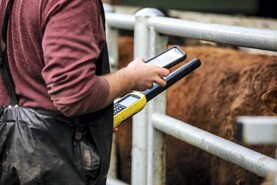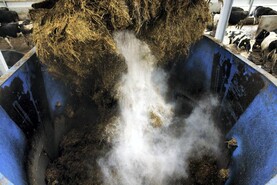Average grass growth over the last week in the south Leinster/Munster area was between 35kg and 45kg per hectare per day.
For mid-September, most farmers would expect grass growth rates to be in the mid 50’s. One week of poorer than normal grass growth rate isn’t unusual but the reality is grass growth rates have been below normal since May.
The issue now is that most farmers in soil moisture affected areas are well below target for the amount of grass they have on the farm now.
They should be pushing towards an average farm cover of over 1,000kg DM/ha and heading for near 1,200kg DM/ha by the end of the month.
Not reaching this target is concerning as it means cows will be housed earlier as farms run out of grass earlier than normal.
The second problem is that many farms are not growing enough grass to sustain the demand on the farm, let alone build cover.
This means that significant extra feed is already being fed such as meal and silage.
The majority of dairy farmers I speak to in the affected areas are feeding silage because growth rates are too low. Importantly, these are not just farmers that are carrying too many cows, which is an accusation often thrown at dairy farmers.
If a farm is stocked at one cow to the acre, or 2.5 cows/ha, even with 3kg of meal being fed per cow, that farm has a demand of 40kg DM/ha/day.
If the farm is growing 35kg/day, then that farm which is stocked at a very moderate stocking rate is going to have to feed more meal or silage.
The next issue is that winter feed is already scarce this year because stocks were used up last winter/spring and silage yields were well back this year.
This means that for many farms that are feeding a lot of silage now and are likely to remain feeding silage for the rest of the season there will be a fodder deficit.
While the weather forecast for the coming week is warmer than last week, there is no rain forecast and a lack of moisture is holding back growth in the soil moisture deficit areas.
Of course there are lots of farms where too much rain has fallen so there are different challenges in different regions. For now, the only advice is to continue to monitor silage stocks and grass growth and update fodder budgets.
Where fodder shortages are likely, offloading non-essential stock now could be a wise option. These include contract rearing youngstock, selling cull cows and beef stock or selling surplus in-calf heifers.
Average grass growth over the last week in the south Leinster/Munster area was between 35kg and 45kg per hectare per day.
For mid-September, most farmers would expect grass growth rates to be in the mid 50’s. One week of poorer than normal grass growth rate isn’t unusual but the reality is grass growth rates have been below normal since May.
The issue now is that most farmers in soil moisture affected areas are well below target for the amount of grass they have on the farm now.
They should be pushing towards an average farm cover of over 1,000kg DM/ha and heading for near 1,200kg DM/ha by the end of the month.
Not reaching this target is concerning as it means cows will be housed earlier as farms run out of grass earlier than normal.
The second problem is that many farms are not growing enough grass to sustain the demand on the farm, let alone build cover.
This means that significant extra feed is already being fed such as meal and silage.
The majority of dairy farmers I speak to in the affected areas are feeding silage because growth rates are too low. Importantly, these are not just farmers that are carrying too many cows, which is an accusation often thrown at dairy farmers.
If a farm is stocked at one cow to the acre, or 2.5 cows/ha, even with 3kg of meal being fed per cow, that farm has a demand of 40kg DM/ha/day.
If the farm is growing 35kg/day, then that farm which is stocked at a very moderate stocking rate is going to have to feed more meal or silage.
The next issue is that winter feed is already scarce this year because stocks were used up last winter/spring and silage yields were well back this year.
This means that for many farms that are feeding a lot of silage now and are likely to remain feeding silage for the rest of the season there will be a fodder deficit.
While the weather forecast for the coming week is warmer than last week, there is no rain forecast and a lack of moisture is holding back growth in the soil moisture deficit areas.
Of course there are lots of farms where too much rain has fallen so there are different challenges in different regions. For now, the only advice is to continue to monitor silage stocks and grass growth and update fodder budgets.
Where fodder shortages are likely, offloading non-essential stock now could be a wise option. These include contract rearing youngstock, selling cull cows and beef stock or selling surplus in-calf heifers.






 This is a subscriber-only article
This is a subscriber-only article










SHARING OPTIONS: